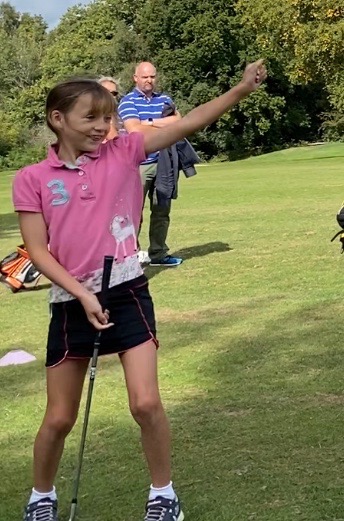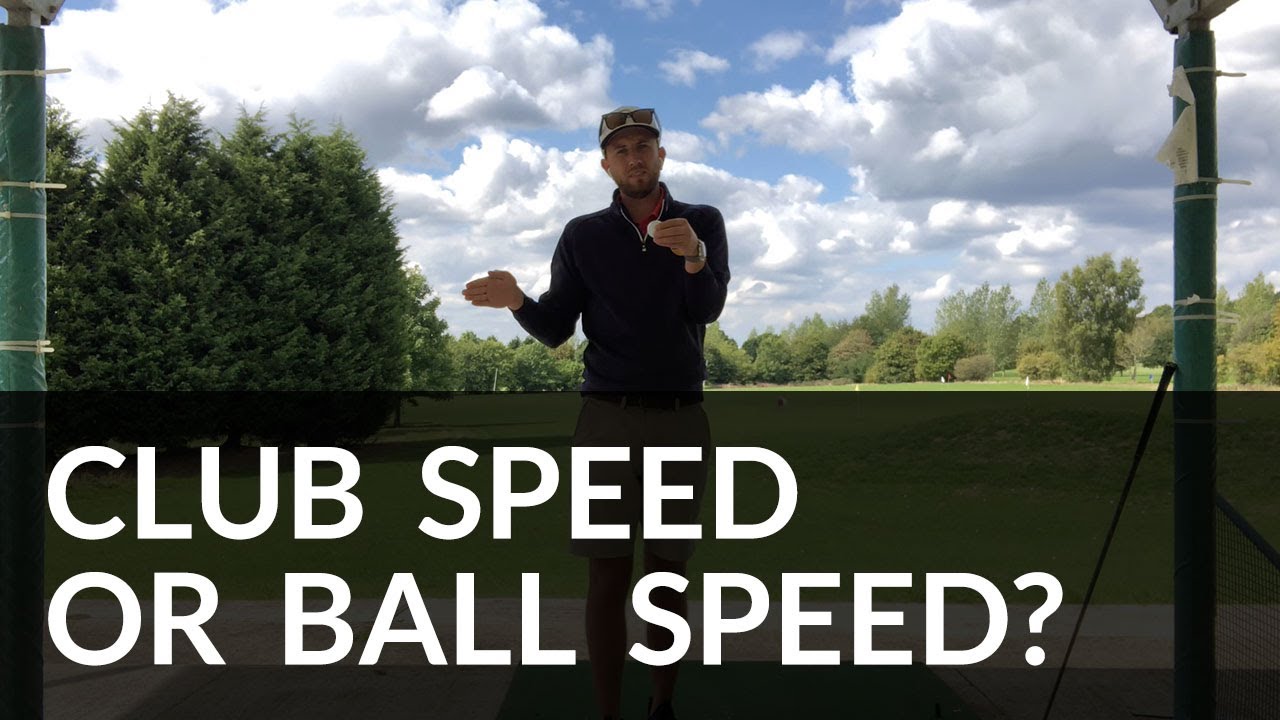
Here are some mistakes you should avoid in order to speed up your clubhead. These mistakes can cause you to lose a powerful angle between your wrists and club. This angle allows for more power and allows you to hit the ball farther. Rotate your upper body against your lower body to improve your speed.
Common errors that prevent a rise in clubhead speed
Many golfers have a primary goal of increasing their clubhead speed. Clubhead speed will make all the difference whether you are looking to improve your driving distance or reduce your irons. The more energy transferred to your golf ball by your clubhead, the faster it can go.
To increase clubhead speed, it is important to know how to grip your club. You can release the club with proper grip. You'll struggle to achieve maximum clubhead speed if you don't do this. The right grip should begin at the top of your hand, where your fingers and palm meet.
Set up
Your golf swing's power and efficiency are dependent on several key components. Your address position is one of them. You'll have a powerful swing if you set this up properly. Your hips will move the right amount at impact, and your weight will be transferred onto your front foot. This will happen effortlessly without your conscious thought.

Proper setup is key to getting the ball moving quicker and longer. At address, your hands should be slightly ahead of the ball. This will allow the shaft to lean forward and create a proper position for ball trapping. Your knees should be slightly bent but not your upper body. This will allow your hips to fully rotate and prevent you from squatting.
Taking the club back quicker
If you're struggling to generate speed, one of the first things you need to work on is taking the club back quicker. You can feel rushed and out of control if you take the club back slowly. You need to be able to generate speed at a steady pace, otherwise you'll lose control over the structure of your wrist and arm.
Another tip is to slow down during the backswing. Avoid jerky movements as they can ruin your golf swing. If you can slow down and maintain a steady tempo, you'll be able to create a longer drive. You'll also find it helps to relax your muscles which will enable you to swing more freely and wind up.
Rotation: Upper body against lower
Rotation of the upper body against the lower is an important skill to improve your ability to swing the golf ball faster. Your lower body is the first to move during the downswing. It is important that you do this as quickly as possible. If you don't do this, your clubhead will lag behind your swing.
You can swing the club by starting with your left arm. Move your weight forward. Next, turn your left knee toward the target. Your left hip will shift toward your target and you'll be ready to go down.

Weighed clubs affect timing and feeling
A golf club's most important feature is its weight. Every golfer's swing is unique so the weight of the shaft can affect the feel and timing of your shots. It is vital to play with different club weights in order to find the right one for you. Also, changing club weight can affect shaft flex, bend and torque. These are all crucial aspects of your golf swing.
Weighted golf clubs have a number of disadvantages. For one, they disrupt your timing and feeling. Weighted clubs can affect your swing speed and timing. This will impact your ability to play consistently. They will also use different muscles to compensate, so you won't be using the correct muscles to swing the clubs correctly.
FAQ
What type of clubs should you use?
There are several different kinds of clubs available. A driver is a heavy-metal club that allows players to hit the ball farther. Woods, wedges and wedges are all options.
Woods are longer clubs, designed to let players get as close to the pin as possible while still being able reach the green. They are often used for long drives and approach shots.
Irons are shorter clubs that are designed to help players hit the ball closer to the pin. These clubs are used often for chipping and putting, as well as short-distance shots.
Specialized clubs are used to control and direct the ball's flight path. These clubs are often used for precise shots.
Putters are small clubs that roll the ball towards a cup. These clubs are used to make short putts.
The type of shot that you are looking to make will determine the type of club you choose. Different clubs suit different types of shots better.
Drivers can be used to hit the ball farther away than the hole, for instance. Wooden woods are excellent for driving long distances. Irons are excellent for short shots. The ability to control the ball's flight is a great advantage of wedges. Putters work well for rolling a ball into the hole.
How can I learn how to play golf?
It takes practice and patience to learn how to play golf. However, it's possible to improve your golf game over time. These are some tips that will help you improve your game.
-
Practice regularly. Golf requires constant attention and concentration. You will not improve your skill level if you don't practice enough.
-
Play with people who play. Playing with other people will help you develop your style of play.
-
Before you start playing, make sure to read up on golf. This will give you an idea of what you need to work on.
-
Try not to learn everything at once. You can start by focusing on one area of your game. You might focus on improving your putting, or learning to chip. When you feel confident, you can move on to other areas of your game.
-
Take lessons. Lessons can teach you important things like stance, swing speed, posture, etc.
-
Try new techniques. Experiment with new grips and stances.
-
Keep records. Keep track and log your scores. You can then see your strengths and weaknesses.
-
Join a local club. Many clubs offer lessons for free. Clubs often have welcoming members who are eager to help newcomers.
-
Locate a coach. Find a coach who can help you with specific aspects of your game.
Can I learn how to play golf?
Yes. There are many schools that offer instruction in golf. You will need to buy new equipment such as a set of clubs.
Statistics
- Professional golfers typically make between 60% and 70% of greens in regulation. (en.wikipedia.org)
- Professional golfers typically make between 60% and 70% of greens in regulation. (en.wikipedia.org)
- In the United States, women made up 25 percent of golfers in 2021, which was up from 19 percent in 2011, and junior female golfers account for 35 percent or 1.1 million golfers.[50] (en.wikipedia.org)
- They do this by means of assessing and rating courses according to the average good score of a "bogey golfer," a player with a handicap of around 20. (en.wikipedia.org)
External Links
How To
How can you play better when the wind blows?
Golf is played in open areas on grassy areas. It is one of most well-known sports. There are many types of golf courses across the world, ranging from public parks to private clubs. Golf is also played indoors, such as at shopping malls and indoor arenas. The game is played on a series or holes. Players must hit the balls into these holes. Each hole contains a fairway or rough, a teebox, fairway, rough, hazards, and a green. Players use either a driver, wedge, long iron, or putter, depending upon the type of shot required. According to the course rules, players may need to carry the ball for a specified distance before hitting it. Or they may only need to drop the ball into the cup. Outdoor golf is different from indoor golf. These include the speed of the wind, temperature, humidity, and visibility.
There are two main types, crosswinds & headwinds. Crosswinds blow from left to right, while headwinds blow from right to left. If the wind is blowing toward the golfer then it's hitting against the winds. If the wind moves away from him/her then it's hitting with the winds. Playing golf in a strong wind is much harder because the ball tends to fly higher and further. It becomes difficult for the player control the trajectory and the direction of the ball. To overcome these problems, players should keep their club faces perpendicular towards the ground. They strike the ball with maximum force and contact so it is fully in contact with the ground. Despite flying lower in stronger wind it travels farther because of the increased resistance to air.
Golf in the wind is a skill that requires practice. The wind influences the ball's flight path. The wind affects the flight path of the ball. A skilled golfer will always be aware of this. He/She would adjust their swing accordingly to ensure that they hit the ball accurately and don't lose any energy. You should also consider where the wind is blowing. The wind does not travel uniformly in all directions. For instance, while the wind blowing off the ocean is generally very light, it can be stronger close to the shoreline. The wind blows the closest to the ground, in the same way. These factors mean that golfers must be aware of the direction and intensity of the wind.
In summary, playing golf in the wind requires constant adjustments to your swing. Watch the wind and ensure that your swing aligns properly. Learn to read the wind and adapt your swing accordingly.